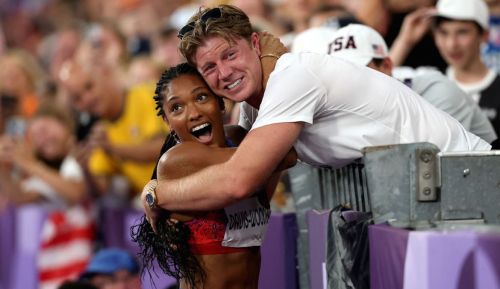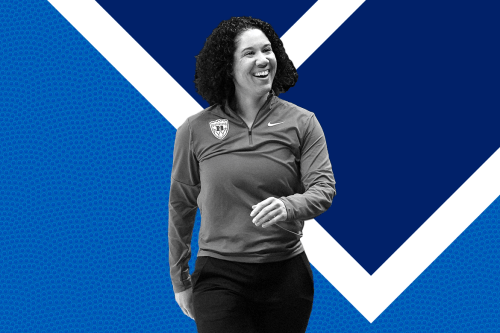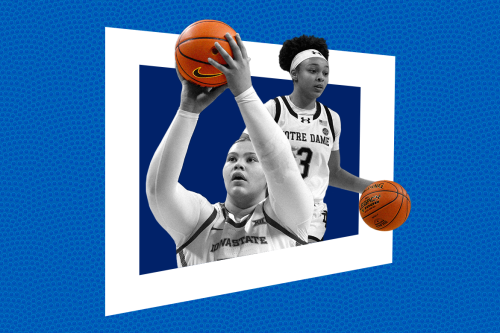As I crossed the finish line of my very first half marathon in January 2020, high on endorphins and my shiny finisher medal, my excitement all but dried up when I looked down at my phone. It was time to end my run on Strava.
Experts in This Article
Two hours and 47 minutes.
My finger hovered over the “finish” button. All my friends and family would see my pace. What if they thought I was slow? What if my accomplishment of running a half marathon was completely overshadowed by my finishing time? Suddenly, this feat I was so proud of just seconds earlier became a source of embarrassment.
Despite having one of the lowest barriers to entry, running can often be laced with a sense of elitism. Almost anyone can slip on their sneakers and go for a jog, but it seems like not everyone agrees who should get to claim the coveted title of “runner.”
Yet Kelsey Smith, a 24-year-old from New Hope, Pennsylvania, is trying to change the narrative one TikTok at a time. Better known as @chickfilaspicydeluxe, Smith has nearly 40,000 people following her on her journey to run her first half marathon in November—and it’s not because she’s breaking a bunch of world records. Smith’s page has become a safe space for beginner runners to share and celebrate their runs, no matter their speed.
Embrace the pace
Smith found running at a point of frustration. She had spent much of 2021 in and out of the emergency room after developing heart arrhythmias, and was struggling to find a form of physical activity she enjoyed. “One night I honestly just kind of became unhinged and went online and found a local 5K that was a month away, and I signed up,” she says.
For the next 30 days, she threw herself into a “Couch to 5K” program and documented it all on TikTok. Until then, she had never run a mile in her life. “And I literally mean that,” she says. Back in middle school, when every kid was assigned to run a mile, she’d do three laps around the track and call it a day, she confesses.
In the days leading up to her first 5K, Smith shared a realistic glimpse into the everyday training of a first-time runner, from chaotic tempo runs cut short and lots of walking breaks to long runs that felt surprisingly easy. And every time she filmed, she’d call out her pace at the end of each mile, most falling between 14 and 10 minutes.
But she admits she had some hesitation: What if an old friend from high school made fun of her pace? Or a coworker found her page and thought she was slow?
“But then I also thought to myself, I’m doing this for me and whether I’m going to run this mile in eight minutes or 15 minutes, it doesn’t change the effort that I’m putting in or how I feel about what I’m doing,” Smith says.
Soon, she started receiving comments and messages she didn’t expect.
Gold Medal Couple Tara Davis-Woodhall and Hunter Woodhall Talk Marriage, Motivation, and Their Next Chapter With Nike

Coach Kara Lawson Wants You to ‘Handle Hard Better’—and Here Are 3 Ways to Do Just That

JuJu Watkins Leaves March Madness With ACL Tear—and This Knee Injury Is More Common Than You Think

“Omg I love you! I have been struggling with my times not being where they were 5 years ago or even last summer but this just made me feel normal!” one user commented.
Shift your mindset
Smith went on to crush her first 5K in 33 minutes and 44 seconds, but even more praiseworthy than her chip time was the army of newbie runners she had inspired. Messages of gratitude poured in from other self-proclaimed “slow runners” who had struggled to make peace with their pace until finding her account.
“I think a lot of people have a mindset of, ‘Well if I’m not going to have my eight-minute mile time I’m not worthy to be stepping up to the start line of this race’ and that couldn’t be more far from the truth,” Smith says.
Especially because “slow” is entirely subjective. What one runner may deem a “slow” run could be another’s race pace. The key to falling in love with running and developing a sustainable running practice is keeping joy at the forefront of your training, says Percell Dugger, a run coach for Nike.
“Too often we discourage people from that journey of self discovery and enlightenment and just falling in love with yourself through the things that you have the capacity to do. Instead we compare ourselves to these times, to these arbitrary numbers, when in reality that’s creating another barrier for a number of people,” Dugger says.
Why everyone should run ‘slow’
In reality, Dugger says everyone can benefit from pulling back their pace sometimes. Whether you’re a seasoned marathoner or a rookie, logging miles that are slower and more controlled prevents runners from putting too much stress on their joints and connective tissues, Dugger says. Scheduling regular recovery or easy runs helps you maintain your aerobic capacity without risking injury.
And these controlled runs can be the key to consistency, he adds. If you hit the track every day determined to run a 10-minute mile when your fitness level isn’t there yet, you’re on the fast track to injury, and suddenly, your running journey is over before it even began.
Running easy should leave you feeling both accomplished and eager to lace up again. Dugger recommends keeping a training journal to log how you feel after each run. Write down your pace, distance, and how you felt mentally and physically during and after your miles. Using this information, you can play around with your speed to find your easy, tempo, and race paces.
Sharing is caring
Smith says there are always a few haters who comment on her videos calling her “slow” or “not a real runner,” but that feedback pales in comparison to the users who say she’s inspired them to give running a shot.
“It just blows my mind because I think running has been very life-changing for me, and I think it is for a lot of people,” she says. “So to know that I’m opening up an avenue for people that maybe they had closed or didn’t have open before, it’s hard to even put into words what that means to hear.”
I shared that half marathon run on my Strava account back in 2020, and I couldn’t even tell you how many kudos it got, but I can tell you that it sparked a lifelong love of running; one that transcends pace and distance and splits.
Sign Up for Our Daily Newsletter
Get all the latest in wellness, trends, food, fitness, beauty, and more delivered right to your inbox.
Got it, you've been added to our email list.








